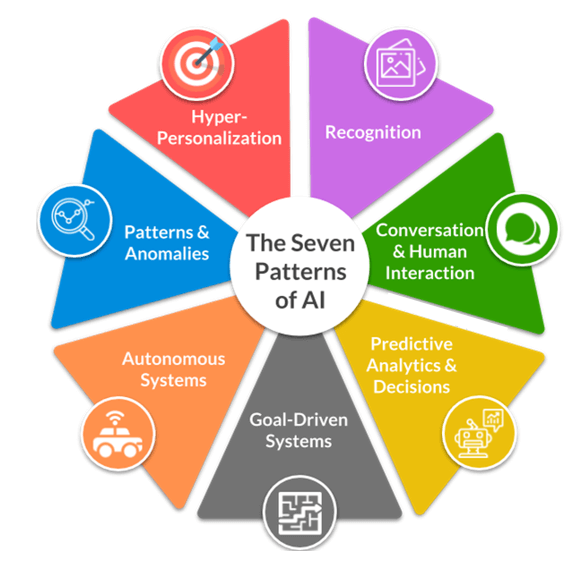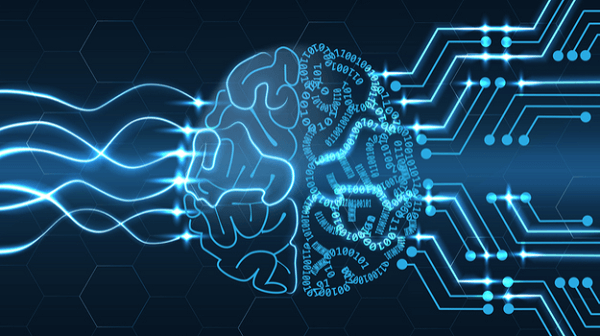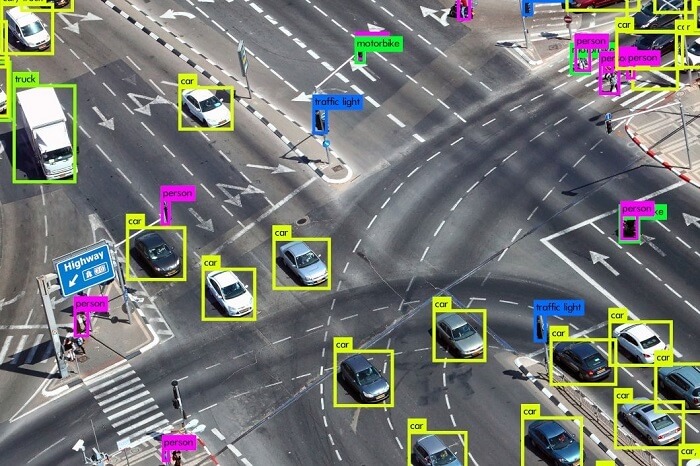Python Tutorial
Python OOPs
Python MySQL
Python MongoDB
Python SQLite
Python Questions
Plotly
Python Tkinter (GUI)
Python Web Blocker
Python MCQ
Related Tutorials
Python Programs
Understanding The Recognition Pattern of Artificial IntelligenceOf the seven types of AI that illustrate the different ways that AI is implemented, one of the most popular is the recognition pattern. The principle behind recognition patterns recognized the pattern in AI involves using machine-learning as well as cognitive technologies to categorize and classify unstructured data into distinct classifications. Unstructured data could include images, videos, text, or even data that is quantitative. The reason this is so effective is that it allows machines to do what our brains do effortlessly: detect what we're seeing in the real world that surrounds us. 
Recognition patterns are distinctive in the sense that it was the efforts to address the problem of image recognition issues that led to an increased interest in deep learning techniques for AI and also helped start this new trend of AI investment and enthusiasm. Recognition patterns are, however, far more extensive than image recognition. In fact, we could make use of machine learning to detect and comprehend sounds, images, handwriting, objects such as faces, gestures, and facial expressions. The aim of this design is to make machines that can recognize and comprehend unstructured data. This type of AI is a major part of AI solutions due to its numerous applications. The main difference between unstructured and structured data is that the structured type is labelled and is easy to read. Unstructured data, however, is where the majority of organizations have difficulty. As much as 90 percent of the data in an organization is unstructured. It is essential for companies to understand and interpret this data, which is the point at which AI can help. While we are able to use the existing query technology and informatics systems for gaining the value of analytic data in structured datasets, it isn't easy to implement these methods with data that is not structured. This is the reason machine learning is such a powerful tool when applied to these types of issues. Machine learning is a powerful capability to detect patterns observed in data. Particularly, we employ methods of machine learning that are supervised to recognize this kind of pattern. In the supervised method, we make use of clean, well-labeled data to train a computer to classify inputs into distinct classes. The algorithm is exposed to a variety of information points and utilizes those data points to create an artificial neural network to classify the data into these categories. The algorithm creates neural connections among these pictures. 
Additionally, it is shown images repeatedly with the intention to eventually allow the computer to understand the content of the image through learning. Of course, they depend on high-quality, well-labelled data that represents the type of data the resulting model will encounter during the actual world. Garbage in, garbage out in these types of systems. Many Applications of the Recognition PatternRecognition patterns allow machine learning systems to "look" at data that is not structured, categorized, or classified. Finally, they understand what could be just an unstructured "blob" of value that is not being utilized. The applications of this pattern are seen in many different applications, from medical imaging, autonomous vehicle handwriting recognition, facial recognition or speech recognition, or even the most precise objects in data and videos of all kinds. Machine-learning-enabled recognition has provided considerable capabilities to surveillance and security systems and allows them to monitor multiple videos in real-time and identify things like delivery vehicles or even people who are in an area they shouldn't be at a specific time of the day. 
The applications for businesses that make use of recognition patterns are numerous. For instance, in the e-commerce and online retail industries, there is a requirement to recognize and tag images for items sold on the internet. Before, humans had to meticulously catalogue each image in accordance with all their attributes, labels, and categories. Today, machine-learning-based recognition systems can quickly find items that aren't listed in the catalogue and then utilize the entire range of information and metadata needed to market those items on the internet without human involvement. This is a fantastic opportunity for AI to join the fray and perform the job much more quickly and efficiently than a human who will eventually become bored or exhausted. Additionally, AI systems will be able to avoid human error and permit workers to focus on tasks with greater value. This recognition pattern is being utilized with images, but it's also being used to detect speech. There are a variety of applications available that identify the song playing or even detect the voice of a person talking. Another possible application for this pattern of recognition is to recognize animal sounds. The use of automated sound recognition is beneficial in the field of wildlife and conservation research. Using machines that identify the different animal sounds and sounds could be an excellent method of tracking the population and its habits, as well as understanding the different species. There is even the possibility of using this for areas like vehicle maintenance, where the machine is able to detect different sounds produced by engines and then inform the person operating the vehicle of the issue and the issue that needs to be addressed and how quickly. The most frequently used application of pattern recognition used by artificial intelligence involves the detection of text and handwriting. Although we've had optical character recognition (OCR) technology that is able to translate printed characters into text for a long time, conventional OCR was restricted in its ability to handle handwriting and fonts of any type. Machine learning-enabled handwriting and recognition is much better in this regard because it is able to recognize text across a broad variety of handwritten or printed modes and recognize the kind of data being stored. For example, if the text is formatted in tabular or column form, it is able to recognize the tables or columns and translate them into the correct format to be used by machines. Additionally, the systems are able to discern patterns in the data, like Social Security numbers or credit card numbers. One of the uses that use this kind of technology is an automatic deposit of checks at ATMs. Customers place their handwritten checks into machines. It is then used to deposit checks without needing to visit an actual person to deposit your check. The pattern of recognition of AI can also be used to recognize human movements. This is already utilized within the game sector. Users can use certain movements or gestures, which can be used in-game to move characters or complete the task. Another significant application allows players to simulate various clothing and accessories. It's also being used in the medical field by surgeons to assist them in completing tasks and instructing people on how to complete certain tasks before practicing the same tasks on a person. With the help of this pattern of recognition, the machines are able even to comprehend the sign language, understand gestures and translate them when required, without human intervention. In the medical field, AI is being used to detect patterns in various radiology images. For instance, the systems are employed to identify fractures blockages, aneurysms, and possibly cancerous structures and are even used to identify possible tuberculosis and coronavirus-related diseases. Analyst firm Coanalytic is forecasting that within only a few years, machines will begin performing the first-ever analysis of all radiology images, allowing for immediate identification of patterns or anomalies before they are sent to a human radiologist to be further evaluated. The recognition pattern is used to detect counterfeit goods. Machine-learning-based recognition systems look at counterfeit goods, like sunglasses, purses, or purses to fake drugs. The application of this type of AI has a direct impact on every sector, from using images to receive insurance quotes to studying satellite images following natural disasters to determine damage. Given the effectiveness of machine learning to identify patterns and apply them to recognize, it should not be a surprise that this kind of AI will continue to witness widespread adoption. In reality, in two or three years, we may become accustomed to the recognition patterns of AI as a given and not even think of it as AI. This is a testament to the power of this AI-inspired pattern. |
 For Videos Join Our Youtube Channel: Join Now
For Videos Join Our Youtube Channel: Join Now
Feedback
- Send your Feedback to [email protected]
Help Others, Please Share









